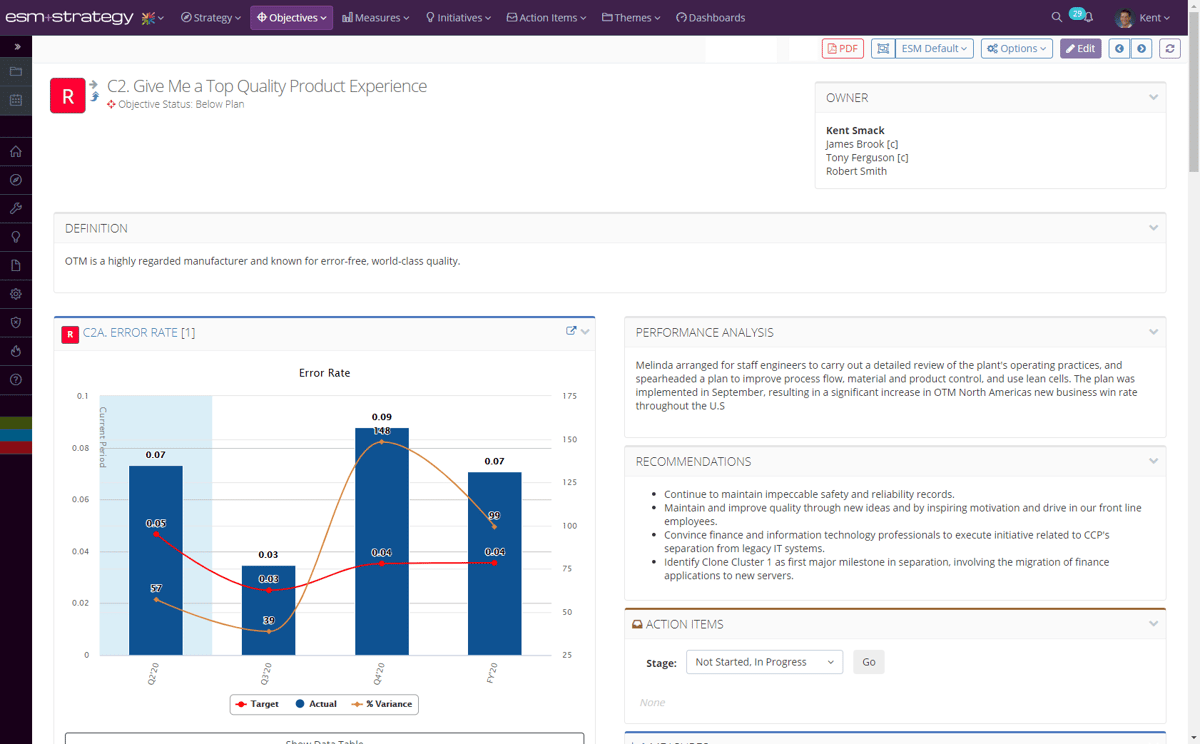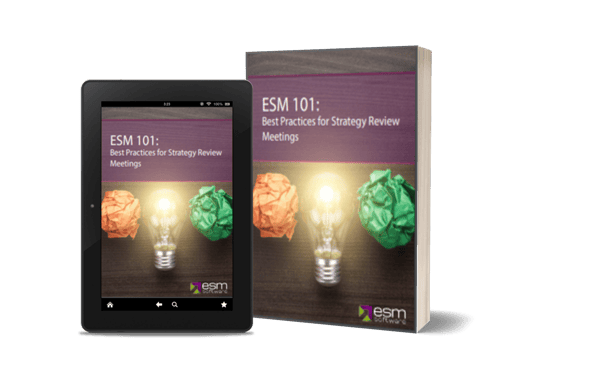How to run a Strategy Review Meeting?
Meetings designed to drive results.
Strategy Review Meetings Done Right
Regular reviews of your business strategy are the critical mechanism that ensures time spent formulating your strategy was not wasted. These meetings set a recurring cadence to review performance and empower the team to take the next step of execution. Successful strategy review meetings provide answers to important questions such as:
-
Did we execute the plan?
-
What happened?
-
Why do we think that happened?
-
What alternatives are there?
-
What do we think would happen?
-
Which is the best choice?
Yet many organizations come into strategy discussions ready to talk operations, put out the latest fire, or go through a project status review, all of which miss the big picture point of the meeting.
If you’re going through the trouble of getting the leadership team in the same room, then it’s important to make sure you’ve nailed down the content. Below are some best practices around getting the most value from your strategy review meetings (SRM).
1. Strategy Review Meeting Frequency
Defining the right schedule and frequency for strategy review meetings for your organization can be challenging. Frequency, scheduling, and logistics are far from the sexiest challenges that you’ll need to solve to get your strategy meetings off and running, but they are absolutely critical to a successful strategy execution process. If this is your first time kicking off a strategy management system, you should probably consider starting with a quarterly review meeting. As ESM and Balanced Scorecard founders Drs. Kaplan and Norton have noted, quarterly reviews typically allow for enough time to collect measure data, for objective owners to provide analysis, and for a report to be generated out ahead of the meeting.
With all of these moving pieces, the review meeting will typically fall between 3-6 weeks after your quarter officially closes. Here are a couple of questions you probably should ask as you are looking to set your governance calendar.
-
When are your financials available? – Financial data availability will kickoff the quantitative side of reporting in any system. Make sure to set deadlines one-two weeks after the data becomes available.
-
Do you have other major reporting deadlines for your organization? – Are there other operational or management process reviews that take place around the same time?
-
When is your busy season? – We’re shooting for discipline around our review meeting process, but let’s be reasonable. If its monsoon season and you’re in the umbrella business, your whole team is probably in the weeds. Maybe have a short review that quarter where you target a couple of objectives to discuss in your performance management. Don’t kill yourself with strategy process when you’re underwater with your operations.

While quarterly reviews are a good starting point for your governance calendar, we also recommend more frequent initiative reviews to open up transparency between how your projects are connected with your larger strategy.
Once you've decided on your frequency, its time to put together an agenda.
2. Less is more
Stop trying to review everything. A focused session where your team discusses three to five big picture objectives is better than trying to cram every detail into your conversation. Selection of the agenda can be highly political (“If we don’t talk about it today, it isn’t important”), so it is a good idea to rotate the deep-dive objectives each meeting.
3. Select a facilitator
Facilitation starts before the meeting begins. The individual chosen identifies hot topics, frames priority issues for discussion, ensures that appropriate analysis is prepared and provided by subject matter experts, and helps unit leaders bring the discussion to a decision.
The facilitator’s contribution during the meeting is very meaningful. When you’re five minutes into a conversation around the 20th line item needed to fix something, someone needs to say, “STOP!” The facilitator’s role is to determine if something can be worked out faster offline and to pull the conversation back to the big picture. Nobody likes getting dragged into details when the big-picture is already agreed upon.
4. Get the report out early
When planning any meeting that will leverage the Balanced Scorecard it is important to ensure that all relevant and available data is gathered and analyzed in advance of the meeting.
The reporting of accurate and timely data is critical to success and proper analysis and reporting of all available data will be helpful in establishing the integrity of the process. However, having access to good data on a timely basis is a necessary but not sufficient condition to achieve the full promise of any strategy.
The real value in the reporting process is using the data (evidence) to provide analysis and recommendations that keeps the strategy relevant and focused on the future. Two best practices should be kept in mind concerning this stage of execution:
-
Delegate and distribute scorecard reporting to those who are most knowledgeable and closest to the activity being measured. They will likely be at the operations level in the organization. This is where day-to-day operational activities take place and the ability to leverage their knowledge and insights may become a strategy execution differentiator.
-
The ability of the leadership team to get the data, to conduct analysis, and generate recommendations from those who know best is the secret sauce for achieving performance breakthroughs when using the Balanced Scorecard. Analysis and recommendations are part of the reporting process that allows the leadership team to learn and adapt.
Preparing for the SRM can be tough with short deadlines necessitated by financial reporting, scheduling, or a variety of other complications. But if you can get that pre-read document out early, the quality of your conversations are going to jump. No excuses. Get your homework done!

5. Make it actionable
One of the main outputs of the strategy review meeting should be an action log. The action log contains the actions agreed upon during meetings, the milestones for those actions, and accountability for future progress and results. Strategy review meetings will enable organizations to achieve higher levels of performance management, to evaluate their own results, and to make decisions that will improve their strategies at least quarterly rather than only once per year.
Summary and Next Steps
Strategy Review Meetings (SRMs) are decision-driven meetings that focus on big-picture strategic questions rather than tactical issues. The discussion should focus on performance, key issues, and suggested course corrections to help the organization achieve its goals. These meetings should be action oriented, assigning ownership and accountability thereby leading to execution.




